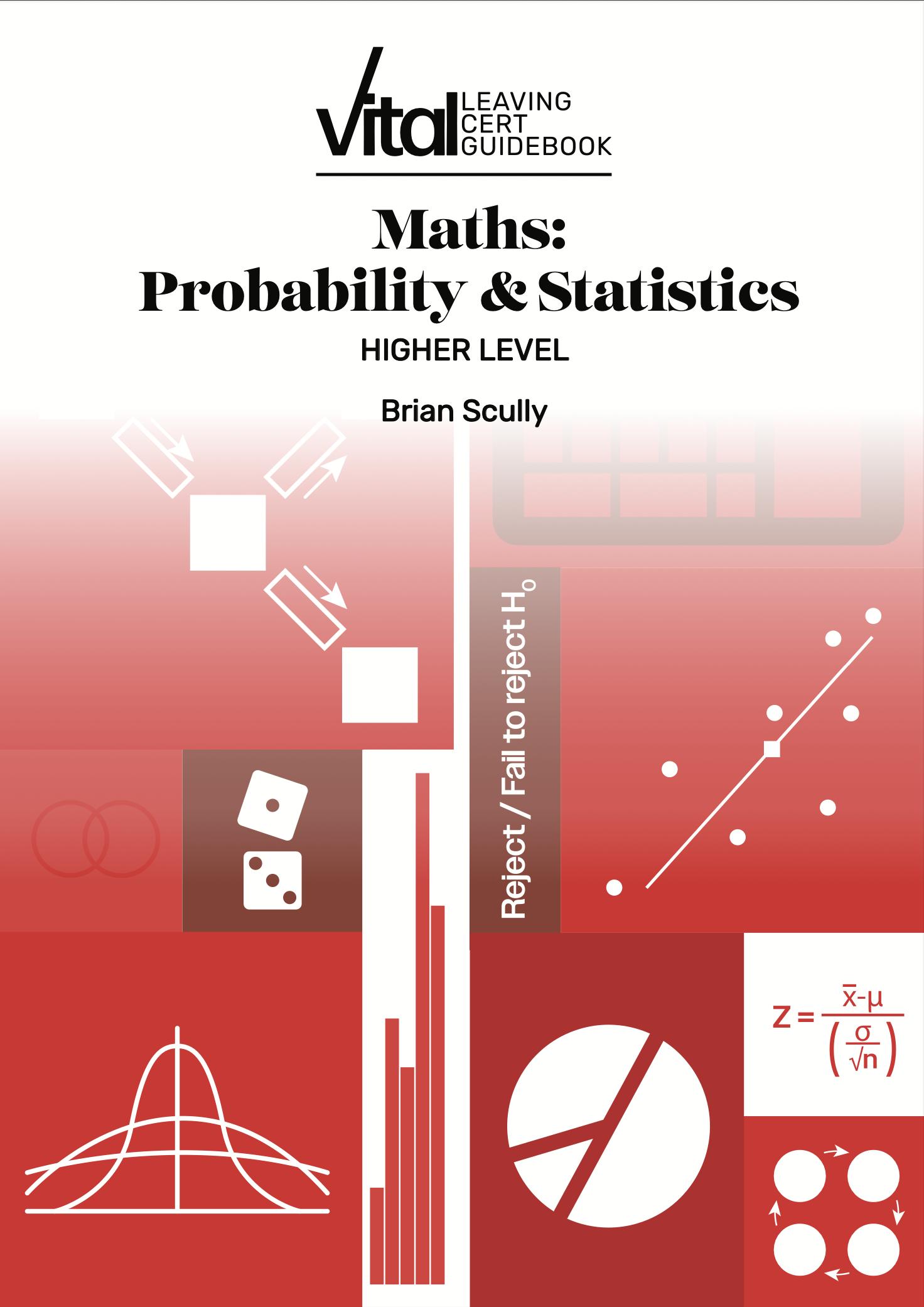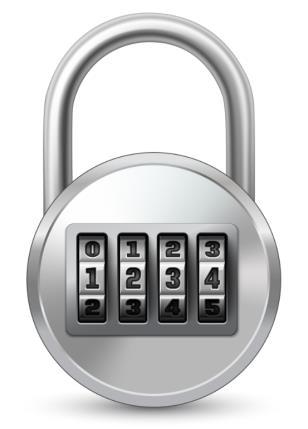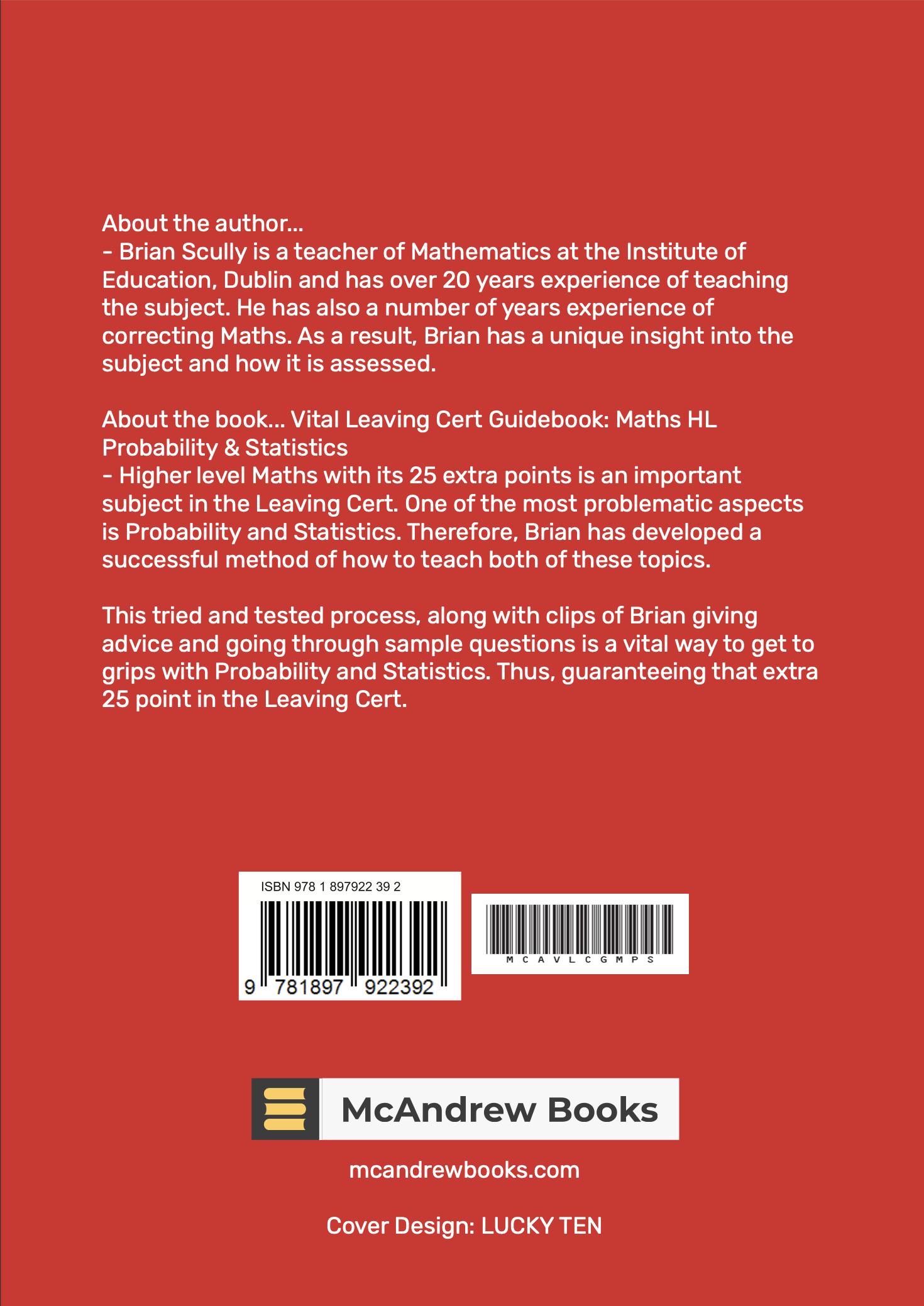

SAMPLE
Probability
Table Of Contents
o Fundamental Principle of Counting & Arrangements Pg. 1
o Choosing Pg. 4
o Experimental Probability Pg. 8
o Expected Value Pg. 9
o Probability & Sets Pg. 13
o Tree Diagrams Pg. 18
o Normal Distribution Pg. 21
o Bernoulli Trials Pg. 30
o General Probability Questions Pg. 33
Statistics
o Data – Collection & Presentation Pg. 37
o Scatter Graphs & Correlation Pg. 45
o Central Tendency & Variation Pg. 51
o Sampling & The Central Limit Theorem Pg. 60
o Confidence Intervals Pg. 64
o Hypothesis Testing Pg. 71
Answers to Exercises – Probability and Statistics
o Answers to Exercises Pg. 77
Clips/QR codes will appear throughout the book. These contain further insights, walk thru question clips and advice from Brian

A word from Brian.
Ex. �� A numerical lock contains 4 positions, each with the options of 0 9, which forms a four digit code. How many combinations does the lock have if:
i. There are no restrictions.
ii. A 0 cannot be first.
iii. The code must be odd.
iv. The code must be a multiple of 5

i. 10×10×10×10=10,000
ii. 9×10×10×10=9,000
iii. 10×10×10×5=5,000……as the last digit must be a 1,3,5,7 or 9
iv. 10×10×10×2=2,000……as the last digit must be a 0 or 5.
Ex. �� Evaluate ��! (��+1)!
Where we are dealing with a theoretical factorial, we should reduce all terms to the lowest possible factorial and then cancel. For example, 5! – which equals 5×4×3×2×1 – could be written as 5×4!. Hence, (��+1)!=(��+1)��!. Therefore, this question can be simplified to: ��! (��+1)��! = 1 ��+1 .
Exercise – Fundamental Principle of Counting
Question �� A person is getting dressed and is considering which socks and shoes to wear. If they have 8 pairs of socks and 4 pairs of shoes how many different combinations are possible?
Question �� In a restaurant there are four options for starters, five options for main course and three options for dessert. How many options does a person ordering dinner have if they:
SAMPLE
i. Order a three course meal.
ii. Order a starter and a main course only.
iii. Order a main course and dessert only.
Question �� A combination lock consists of a letter (A to Z) followed by three digits (0 9 inclusive). How many possible combinations are there if:
i. There are no restrictions.
ii. The first digit must not be 0.
iii. The number must be even.
Ex. �� The local GAA club holds a club lotto draw every week. Players need to choose 3 numbers between 1 and 20. If you match all three numbers with those drawn you win €1,000 and if you match any 2 numbers you win €100. What is a fair value to charge to play the game?
There are two options to win:
a) All 3 numbers correct – the probability of this is given by:
b) 2 numbers correct – the probability of this is given by:
Therefore, the expected value is:
For the probability of winning
we should view this as choosing three of the desired items (the three numbers which are selected in the draw) divided by the total number of choices.
For getting two numbers correct -
implies two correct choices and one incorrect choice) we need to choose two of the desired three items and one of the undesired seventeen items, divided by the total number of choices.
Exercise – Expected Value
Question �� A probability distribution for the random variable �� is shown. Calculate the expected value.
Question �� A probability distribution for the random variable �� is shown. Calculate the expected value.
Question �� A game involves five cards with the numbers 1,2,2,3 and 4. A contestant wins the amount equal to the value on the card they draw.
i. Show the expected value for this game is €2∙40
ii. If the organisers are charging €3 to enter, how much would the organisers expect to make if 100 contestants play the game?
…………………………………….…Tree Diagrams…….………………………………….
Tree diagrams were used frequently at Junior Cycle, so you should be aware of how to construct one. However, they are used to answer different questions at Leaving Certificate HL. You should always ensure the sum of the total probabilities is 1 – this is a good indication that your tree diagram is correct.
Ex. �� Where Alex lives, the probability of it raining on any given day is 0∙2. If it is not raining, the probability of Alex being on time for school is 0∙9. If it is raining, the probability of Alex being on time for school is 0∙4.
i. Construct a tree diagram to represent the above information.
ii. What is the probability that Alex is late for school?
By adding the individual probabilities
we can see we have accounted for all possibilities, so our tree diagram is correct.
ii. From the completed tree diagram, we can see there are two scenarios where Alex is late. By adding the individual probabilities of these events, we obtain the probability they would be late:
The Empirical Rule
The Empirical Rule allows us to estimate the amount of a normal distribution which lies within a certain number of standard deviations.
• 68% of a distribution lies within ±1 standard deviation of the mean.
• 95% of a distribution lies within ±2 standard deviations of the mean.
• 99∙7% of a distribution lies within ±3 standard deviations of the mean.
68% lies within ±1 standard deviations of the mean
95% lies within ±2 standard deviations of the mean
99∙7% lies within ±3 standard deviations of the mean
Ex. �� A factory machine produces parts which have lengths that are normally distributed with a mean of 120 cm and a standard deviation of 0∙7 cm. Using the Empirical Rule, establish the proportion of parts which are between 119∙3 and 120∙7 cm?
As 119∙3 and 120∙7 are both 0∙7 cm away from the mean – which is the value of 1 standard deviation - following the Empirical Rule 68% of all parts will lie between these values.
��-Scores
SAMPLE
��-scores are a measure of how many standard deviations away from the mean a value is in a normal distribution. We can reference a ��-score to a probability using the table in our Formulae & Tables Book on Pages 36 & 37
STATISTICS
………………………….Data – Collection & Presentation….……………………
“Data” is a collection of values that convey information
You should be aware of the data types you would have previously studied at Junior Cycle. Essentially, data will come in two forms:
• Numerical – data which involves numbers (e.g. what is your age?)
• Categorical – data not involving numbers (e.g. in which county do you live?)
Within each form there are two groupings:
Numerical
Discrete – the number has only specific values (e.g. your age, in years)
Continuous – the number can have any value (e.g. your exact height)
Categorical
Ordinal – there is an order to the answer (e.g. your grade band in an exam)
Nominal – there is no order to the answer (e.g. your favourite colour)
Ensure you can come up with questions which give answers for each of the possibilities!
Statistics can be descriptive – data which is surmisable and presentable – or inferential –data which comes from a small group and is used to predict or forecast.
The data handling cycle is an important relationship in statistics: Collect Data Present & Analyse Data Interpret the Results Pose a Question





